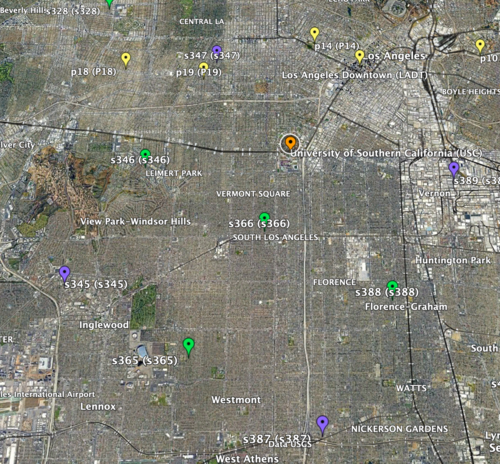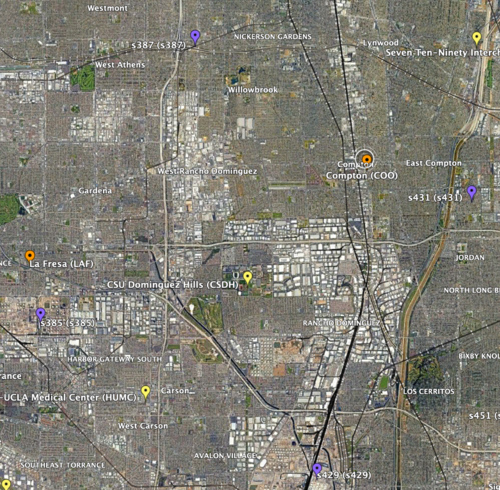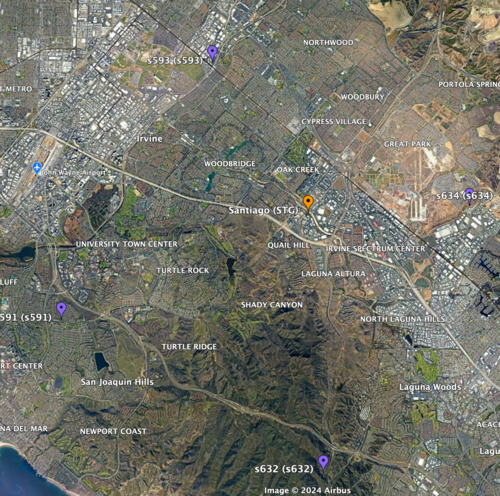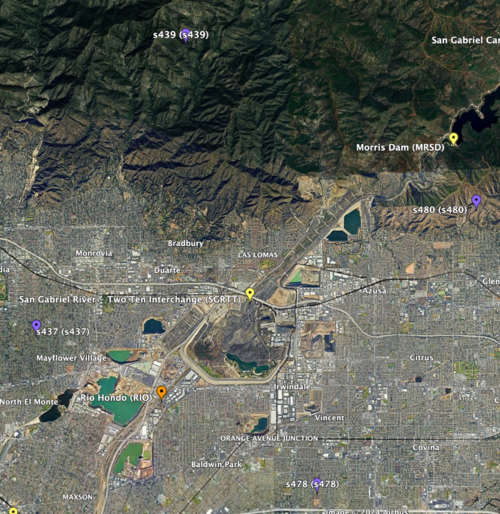CyberShake interpolation
From SCECpedia
This page documents research into techniques for interpolating various CyberShake data products, performed by 2024 SOURCES intern Amelia Kratzer.
Contents
Hazard Curves
Procedure
Selection of Sites
- To start, I selected 4 sites (input sites), all in the basin, that formed a 10km by 10km square inside which there was at least 1 site to interpolate (interp site). This way I could compare the simulated values for that site to the interpolated to check the accuracy of my interpolation.
- 1st chosen area: USC as there are three sites on the exterior for 1D linear interpolation and two sites on the interior for 2D linear interpolation
- 2nd chosen area: CSDH
- Next, I selected two locations where some of the sites were not in the basin, to test how different velocity structures may affect the accuracy of the interpolation.
- 1st location: STG
- 2nd location: SGRTT
Linear Interpolation of Hazard Curves
- Download and plot the input sites' hazard curves
- Query CyberShake database to get the X shaking values and Y probability values for input and interp sites
- Use UTM to convert locations of sites to meters from lat/lon
- Calculate the X’ and Y’ distances to my interpolated site from the left and top edge of my square since the 10km by 10km square is on a rotated axis
- For each shaking value, use the probabilities of shaking at the input sites and these X’ and Y’ distances to perform bilinear interpolation
- Plot the (shaking, interpolated probability) points to form the interpolated hazard curve
- Overlay the interpolated hazard curve and the simulated hazard curve on a plot for comparison
Error Calculations I compared the simulated probabilities to the interpolated probabilities for the given site, and calculated the absolute percent difference at each acceleration value. Percent difference accurately models the accuracy of the hazard curve since it reflects the larger differences in the simulated and interpolated results at the higher acceleration values.
I chose two metrics by which to compare the accuracy of my interpolations - max percent difference and average percent difference.
Linear Interpolation Of Hazard Curves
- Download and



